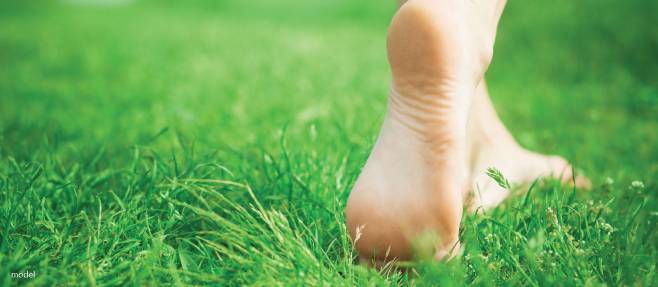All About Warts: Treatments and Prevention

Of all the unwanted and bothersome skin conditions, warts are some of the most common intruders. But what causes a wart? And who gets warts? But most importantly, what are the best treatment options and ways to stop warts from spreading?
Simply said, a wart is a viral infection of the skin. There are two common types of warts that affect the skin: Verruca Vulgaris and Molluscum Contagiosum. Both types of warts are caused by exposure to papillomavirus, a virus which is highly contagious and can spread across an individual’s body or be transferred from person to person. Contrary to popular belief, warts do not have a hereditary component, nor are they caused from kissing frogs!
Types of Warts
Verruca Vulgaris: This is the most common type of wart and often manifests on the knees, back of hands, or fingers. This type of wart can grow on any area of the body exposed to the virus, particularly areas where the skin is broken, and can easily spread through physical contact. Cracks or cuts in the skin act as channels for the virus to quickly embed into the skin.
Plantar Warts: This is a subtype of a Verruca Vulgaris that is specific to the bottom of the feet. Warts prefer to grow outward from the skin, however the pressure that is placed on our feet from walking causes the wart to only be able to grow inward beneath the skin. Plantar warts are known for being very stubborn to treatment because of the hard callus they form within the skin. Learn more about plantar warts
Molluscum Contagiosum: This type of wart is very common in kids and, as its name suggests, highly contagious. These appear as shiny little pink or brown bumps. Though the infection often starts as one or two bumps, it spreads rapidly and can cause numerous little bumps across any part of skin. It is understood that developed immune systems (in adults) are able to fight off this virus, however young immune systems in kids can take years for the tolerance to build up. Without prompt and full treatment, these can cause considerable discomfort.
How to prevent warts
While there is no foolproof way to avoid warts, no matter how good your skin care regimen is, there are some easy ways to reduce your risk of developing warts:
- Avoid biting your fingernails as that action can create cracks and cuts predisposing the fingers to infection
- Wash your hands frequently and properly
- Moisturize regularly
- Wear shoes or flip flops when walking in public areas (gyms, pools, etc.)
- Make sure to thoroughly clean any cuts on your skin in a timely manner
- Refrain from sharing razors, socks or towels with other people
- Do not touch warts on other people
- If you notice a single wart developing on your skin see a dermatologist to prevent further spreading.
Treatment Options
There are many treatment options for warts including:
- Salicylic acid: The first line of treatment is sometimes a topical medication with salicylic acid as the active ingredient. Over-the-counter treatments exist or medication with higher concentrations of salicylic acid can be prescribed by your dermatologist. Salicylic acid typically resolves about 10-15% of plantar wart cases.
- Cantharidin or “blister beetle juice”: This is a liquid blistering agent that can be painlessly applied in the office and deactivated several hours later at home with soap and water. Once applied it can cause the individual warts to blister, harden, and eventually peel off. This is the treatment of choice for Molluscum Contagiosum or for small warts in young children who are not able to tolerate the discomfort of more aggressive treatments.
- Liquid nitrogen or “cryosurgery”: This is the most common non-surgical treatment for warts. It works by freezing the wart to create a controlled burn, causing cellular destruction. While effective, this treatment is uncomfortable and is avoided in young kids with a low pain tolerance.
- Intralesional Injections: These are medications that can be injected directly into persistent warts in the office. One commonly used injectable therapy is “Candin,” a dilute form of the Candida Yeast. This which works to boost the body’s immune response to the HPV virus. Bleomycin, a medication that is toxic to the virally infected skin cells, can also be injected.
- Laser Therapy: Depending on the thickness of the wart and its location on the body, some warts can be treated with a Pulsed Dye Laser. This uncommon treatment is reserved for warts that are not responsive to traditional treatments.
- Surgical Excision or Laser Surgery: While generally the last treatment option, surgical removal may be necessary for larger plantar warts that do not respond to other treatments. Methods used in dermatology clinics minimize scarring to the area, while still effectively removing the viral infection.
Disclaimer: The contents of the Westlake Dermatology website, including text, graphics, and images, are for informational purposes only and are not intended to substitute for direct medical advice from your physician or other qualified professional.

With our skin, it is important to take care of it best we can. Now with warts, they will appear if you don’t do that. As you said, there are many ways to prevent warts. One of them is wearing shoes or any other footwear in public areas. It always surprises me when I see people walking around without anything on their feet!